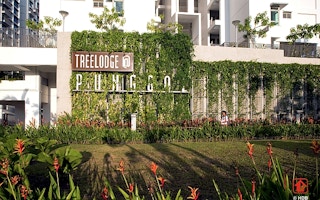When American software giant Microsoft decided in 2013 to upgrade its 500-acre headquarters to a smart campus in Redmond, Washington, it realised that the exercise would have a hefty price tag of US$60 million.
This was because the many different buildings, electronic devices, and over 30,000 sensors which had taken root in the campus since it was set up in 1986 would need to be “ripped and replaced” to achieve a seamless, smart system.
Determined to avoid this huge expense, let alone the inconvenience of relocating employees and shutting down laboratories, the company invented its own software to integrate all its sensor-enabled equipment.
This tool, which Microsoft says functions as an “analytical blanket” that lies over its existing equipment, applies a combination of Microsoft products and solutions by other vendors to consolidate and analyse the data from various systems across the campus.
Darrell Smith, who led this initiative and is Microsoft’s director of worldwide energy, said that the problem of disparate building technologies that do not communicate with one another “is an industry problem - not Microsoft’s alone”.
“The industry has been making buildings the same way for the last 20 years, where individual components are made in silos,” he said, noting that this is neither efficient nor sustainable.
By inventing a solution to address this widespread problem on its own campus, Microsoft was able to reduce its campus’s energy usage by six to 10 per cent and save thousands of dollars without making a single retrofit.
Speaking at the International Green Building Conference 2015 at the Marina Bay Sands in Singapore, Smith said that the software enabled the campus’s facility managers to have a more holistic overview of different buildings, observe processes at a more granular level, and address hardware malfunctions more quickly.
Echoing this view, other panelists speaking at a discussion on smart and sustainable cities said that getting building management systems in individual buildings to speak to one another is a crucial challenge that cities need to solve in order to reduce energy and resource use. Many cities are turning to smart technology to overcome this barrier, they added.
Frankfurt, Germany, is an example of a city that between 2008 and 2012 adopted a technology solution by French energy management multinational Schneider Electric to link up the individual building management systems of 2,450 buildings owned by the city.
Gordon Falconer, director of smart cities, Schneider Electric, told the 100-strong audience that bringing in data from individual building management systems onto a common platform allowed the city deeper insights into how each building was performing relative to others.
Cities are complex systems, said Falconer, and integrating their various functions can help drive efficiency and economic benefits. This is one of the “next big things” that Schneider is focusing on, he added.
Falconer noted that while many cities around the world “have a long way to go” in this area, Singapore is at the forefront of the smart city movement.
The city-state, which last November declared an ambition to be the world’s first Smart Nation, has invested billions of dollars into adopting smart technology to help it achieve its goal.
The island nation’s Housing Development Board (HDB), for example, which manages the public housing estates home to 83 per cent of Singaporeans, is embracing smart technologies not only to address energy and sustainability issues in buildings, but also to offer residents a better living experience.
Johnny Wong, director of HDB’s Building Research Institute, an outfit dedicated to researching new solutions to make homes more sustainable and efficient, cited Singapore’s Treelodge@Punggol project as the agency’s first foray into introducing green features into housing estates.
Many of the features implemented in this estate - including rooftop gardens, solar panels, and LED lights have become standard sustainability features in other new housing estates. Now, the agency is embracing smart technology as “an enabler which helps us see how to stretch our goals further”, he added.
To do this, HDB has launched a Smart Town framework, which will see the agency introducing information and communications technology into neighbourhoods to achieve several key outcomes.
These include: designing more cost-effective and sustainable neighbourhoods; keeping tabs on environmental factors such as temperature and humidity, and deploying solutions like smart fans or sensor lights to keep residents comfortable; and making homes smarter through digital infrastructure such as a system which alerts caregivers when elderly residents are inactive for a long time.
Integration is also a key priority for HDB, and to consolidate the data from its various initiatives, the agency will build and operate a centralised platform known as a Smart Hub, which will allow the agency to monitor all aspects of how its estates and buildings are running.
But while technology can help overcome challenges such as integrating multiple sources of data or automating energy saving behaviours, a key challengeremains for HDB, and that is getting residents to use and support smart devices in their neighbourhoos and homes, said Wong.
“How do you get people to accept smart solutions? They must be so seamless that people don’t feel it,” he said, adding that reams of instruction manuals for new technologies would discourage people from embracing new ideas.
The problem can arise when technology developers, wanting to showcase their abilities, create a solution that is packed with complicated features, he explained. To prevent this overload, “you need to look at technology very critically,” said Wong.
“That’s why we are testing out technologies with residents to make sure they actually like it”.
Eco-Business is producing a special e-newsletter featuring stories on the proceedings at IGBC 2015, kindly supported by City Developments Ltd and the Building and Construction Authority. Sign up to receive the newsletter here.













